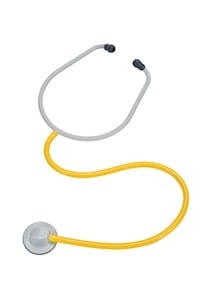By Jenna Lindsay, BSN, RN
Mitigating risks of healthcare-associated infections (HAIs) is constantly on the mind of hospital leadership and clinicians alike, and even more so when treating vulnerable patients in isolation care settings. Because these patients can be more contagious and/or susceptible to infection, isolation care requires extra attention to detail to ensure infection prevention protocol compliance is followed.
The good news is, special precautions to better protect this high-risk patient population are gaining the attention of healthcare organizations and manufacturers alike.
Frequently used equipment that can be vectors of cross-contamination – such as rolls of medical tape – are being designed for single-patient use in isolation settings to help decrease the risk of pathogen transmission. Additionally, leading healthcare organizations like the Centers for Disease Control and Prevention (CDC), Society for Healthcare Epidemiology of America (SHEA) and the Infectious Diseases Society of America (IDSA) specifically recommend single-patient stethoscopes be used for patients in isolation environments.
However, poor quality disposable equipment can make it difficult for clinicians to comply with isolation protocols. This is especially true for important diagnostic tools, such as stethoscopes, that play a critical role in patient care decisions.
Personal Stethoscopes: Unsuspecting Introducers of Risk
Clinical research on whether stethoscopes can be a source of cross-contamination is quite compelling.
A literature review summarized in the Journal of Hospital Infection found an 85 percent contamination rate of personal stethoscopes and another study published in the American Journal of Infection Control found more than 75 percent of clinicians do not clean their stethoscope between patients.
With these stats, one would think consistent use of single-patient stethoscopes in isolation would be high, but clinicians say traditional single-patient stethoscopes typically fall short in terms of durability, sound quality and comfort. This often forces clinicians to face a difficult choice: compromise care with a poor-quality single-patient stethoscope or potentially transmit infection-causing pathogens by using a personal stethoscope. According to a recent study conducted by 3M, clinicians often opt for the latter, as 74 percent of clinicians reported having used their personal stethoscope on patients in isolation environments.
In selection, quality is key
Many disposable stethoscopes on the market today have unacceptable acoustics, are uncomfortable, and/or are not durable enough to withstand everyday wear-and-tear, making it difficult to dig through all of the offerings to find one that works effectively. Recent additions to the market have been introduced to help rectify some of these quality gaps to help improve isolation protocol compliance.
In my experience as a nurse, I have found a few key factors to look for when selecting a high-quality single-patient stethoscope. These include:
- High-quality acoustics
A disposable stethoscope should have high-quality acoustics in order to get clear and reliable sound during assessments. This is the biggest draw to getting clinicians to stop using their personal stethoscopes. The diaphragm should be high-quality so you can hear both high and low frequency sounds.
- Maneuverable
The stethoscope should be maneuverable for the comfort of both the patient and health care provider. The tubing should be flexible and durable so it can be positioned without breaking or affecting sound quality. It should also have an easy to grip chest piece that can accommodate multiple hand positions.
- Comfortable
Often overlooked, it should have soft and flexible eartips and a comfortable headset. Clinicians still want their single-patient stethoscope to feel high-quality.
Implementing change
In addition to providing high-quality single-patient stethoscopes, hospital leadership needs to implement strategies to ensure compliance. Sufficient training in how to obtain the best sound results is needed so clinicians can adjust to using a different stethoscope than their own. Hospitals should provide hands-on evaluation so clinicians can be assured that the single-patient stethoscope is high-quality. Finally, there should be a convenient way to provide feedback so leadership knows when there is a problem with single-patient equipment before clinicians resort back to using personal equipment.
Healthcare leadership can better support their staff in the ongoing battle against HAIs when they understand the challenges clinicians face when they are confronted with low-quality disposable equipment. Purchasing managers can help by equipping their staff with the right tools to get the job done and help reduce infection risk while still providing high-quality patient care. With the recent advances in single-patient products, clinicians do not need to be in the position of choosing between using reliable equipment and delivering quality care.
For a deeper dive into this topic, download the whitepaper, “High-Quality, Single-Patient Disposable Stethoscopes: Reducing Infection Risk in Isolation Environments.”
Jenna Lindsay has more than 12 years of OR experience with a diverse background as a circulating nurse, Assistant Clinical Manager for Neuro/ENT, OR educator and OR manager. She’s currently a Technical Service Specialist in 3M’s Medical Solutions Division. Jenna holds a BSN from Allen College and is a member of APIC and AORN.
The Editorial Team at Healthcare Business Today is made up of skilled healthcare writers and experts, led by our managing editor, Daniel Casciato, who has over 25 years of experience in healthcare writing. Since 1998, we have produced compelling and informative content for numerous publications, establishing ourselves as a trusted resource for health and wellness information. We offer readers access to fresh health, medicine, science, and technology developments and the latest in patient news, emphasizing how these developments affect our lives.








